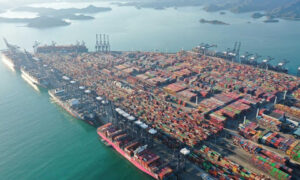Infrastructure spending has helped China’s economy to grow dramatically over the last couple of decades. From laying thousands of railway tracks to constructing phenomenal skyscrapers, the willingness to offer lucrative jobs and enhance the quality of life paved the way for a boom that has somehow continued till today.
China has always primarily depended on the government for infrastructure investment. After all, it ensured employment in multiple jurisdictions at the same time. But to become a world leader, the country decided to shift its focus. Now China is rejecting unsustainable and speculative projects.
The below pointers will help you understand how China’s infrastructure development can impact the global economy. Please go through them right now.
-
Infrastructure Investment of China
According to China Economy News, even though overall infrastructure investment has increased, growth has slowed down to a great extent. This is due to huge restrictions on government debt and stricter regulations on the kinds of projects the government is able to fund.
The nation-wide infrastructure projects like shantytown renovation and construction of top-speed railways, which were quite successful in bringing growth and providing jobs, have also wound down. However, fortunately, many other large-scale projects cropped up to replace them.
-
Triggering Infrastructure Spending
China’s infrastructure investment is a critical driver of economic development and a significant instrument for securing jobs. Even though the government can ease up on a few restrictions on lending and debt, it will be for the industries that the government considers important for China’s long-term objectives. Restrictions on commercially dubious, speculative, and unsustainable projects will remain in place.
-
Funding Infrastructure Projects through SPBs
The best way the government can gather funds for infrastructure projects is by delivering SPBs or special purpose bonds. From the funds raised, approximately fifty percent was utilized for municipal administration, transport, and industrial complexes. 30% was spent on education, housing, senior care, health, and tourism. The remaining 20% was spent on forestry, energy, agriculture, and irrigation.
-
Paying Attention to New Infrastructure
China has also bee paying close attention new infrastructure, which can be divided into three groups.
Innovative infrastructure includes infrastructure that supports technology, science, and education.
Information infrastructure includes Internet of Things, 5G, blockchain, cloud computing, artificial intelligence, and blockchain that can increase the speed, productivity, and accuracy of information.
Integrated infrastructure supports the transformation and upgrade of conventional industries through application of big data, internet, AI, etc.
-
Contributing to Transport Infrastructure
China’s top-speed railway network has been driving economic growth since several years. A detailed plan was formulated that specifies expansion of China’s railroads, passenger airports, and highways. The plan also calls for making railways accessible in rural villages. Expanding the coverage of coastal ports and airport hubs is also necessary.
-
Expanding Social Welfare Infrastructure
China’s social welfare infrastructure can also impact the global economy. Last year, the government eliminated caps on the loans to finance reasonably priced rental housing. This move hits many targets – it simplifies restrictions on struggling properties, elevates local infrastructure expenditures, and provides housing solutions for people with low income.
According to China Economy News, these measures have garnered positive outcomes. Studies have shown that Chengdu, a Sichuan province, has decided to construct, reconstruct, and renovate around 300,000 rental properties by 2025. About 60,000 has already been completed by 2022.
-
Building Environmental Infrastructure
Environmental infrastructure includes infrastructure that is capable of establishing a system integrating garbage, sewage, hazardous waste, medical waste, solid waste, etc. To support the construction of environmental infrastructure, the government of China has to increase fiscal tax and change its existing financial policies. It has to prepare a budget allocated specifically for environment infrastructure. It also uses SPBs to finance these projects without any hassle.
-
Infrastructure Spending and Economic Growth
Infrastructure spending has lead to economic growth. The central government has been spending money on different public infrastructure projects like logistic chains, social housing, railways, etc. These have a great chance of improving economies and increasing the standard of living.
The foreign nations that have been planning on investing in China’s infrastructure projects must refer to the above article. You can arrive at a decision seamlessly when you know how the country can impact the overall global economy.































